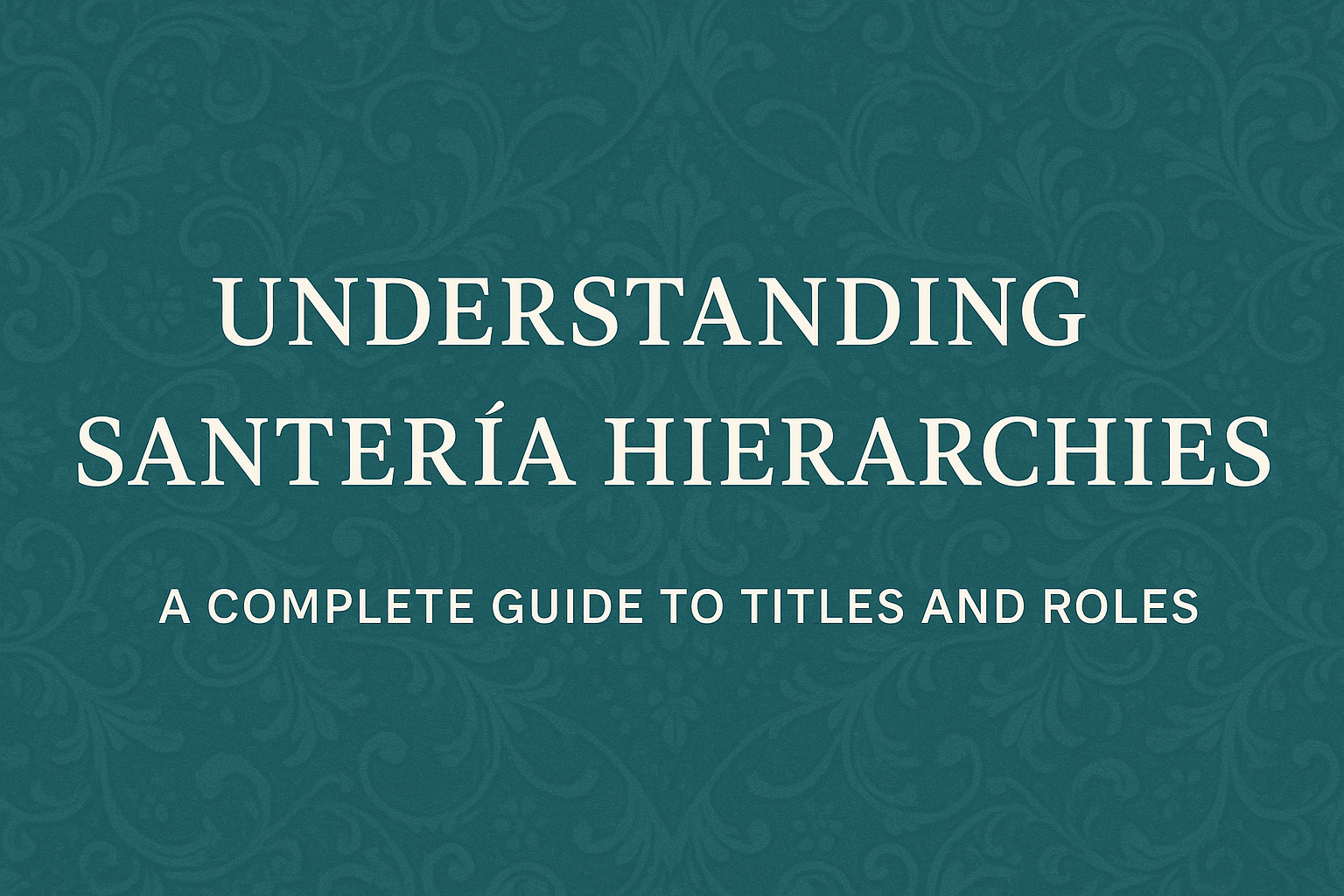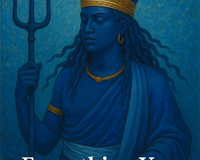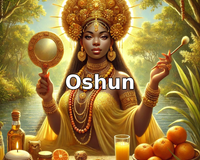- The Sacred Foundation of Santería Religious Structure
- Foundational Principles of Religious Hierarchy
- Entry-Level Practitioners: Omo Orisha
- Responsibilities and Limitations
- Initiated Priests: Santero and Olorisha
- Gender-Specific Designations
- Advanced Divination Specialists: Babalawo
- Ceremonial Authority and Restrictions
- The Pinnacle of Religious Authority: Oba Oriate
- Ceremonial Leadership and Knowledge Preservation
- Navigating Hierarchical Relationships
- Contemporary Challenges and Adaptations
The Sacred Foundation of Santería Religious Structure
Within the intricate tapestry of Afro-Cuban religious traditions, Santería stands as a profound spiritual system characterized by its meticulously organized hierarchical structure. This sacred framework, rooted in Yoruba cosmology and refined through centuries of diasporic evolution, establishes clear pathways for spiritual advancement and religious responsibility. Understanding these hierarchies becomes essential for practitioners navigating their spiritual journey, as each level represents distinct ceremonial obligations, ritual knowledge, and community standing.
The hierarchical system serves multiple purposes beyond mere organizational structure. It preserves ancestral wisdom through systematic knowledge transmission. It maintains ritual purity through careful oversight of ceremonial practices. Most importantly, it creates a supportive network where experienced practitioners guide newcomers through increasingly complex spiritual territories.
Foundational Principles of Religious Hierarchy
The Santería hierarchy operates on principles of aché (spiritual force), experience, and ceremonial initiation. Each ascending level requires deeper commitment, expanded knowledge, and greater responsibility toward the religious community. This progression ensures that sacred traditions remain intact while allowing for individual spiritual growth within established parameters.
For practitioners seeking authentic ceremonial tools to support their journey through these hierarchical levels, understanding the significance of traditional ritual implements becomes paramount. Sacred objects like elekes, mazos, and other ceremonial items serve as tangible connections to the orishas and markers of one's position within the religious structure.
Entry-Level Practitioners: Omo Orisha
Omo Orisha, literally translated as "children of the orisha," represents the foundational level of Santería practice. These individuals have received their elekes (sacred necklaces) and warriors but have not yet undergone the transformative process of kariocha (making saint). They occupy a crucial position as students actively learning the fundamentals of Yoruba cosmology, ritual protocols, and orisha veneration.
The journey of an Omo Orisha involves extensive preparation and observation. They attend ceremonies, participate in community gatherings, and gradually absorb the complex symbolic language that governs Santería practice. This period often extends several years, allowing individuals to demonstrate commitment and develop spiritual sensitivity necessary for advancement.
Responsibilities and Limitations
Omo Orisha practitioners maintain personal altars and perform basic offerings to their guardian orishas. However, their ritual activities remain circumscribed by their uninitiated status. They cannot perform divination for others, conduct major ceremonies, or access certain sacred knowledge reserved for initiated priests.
During this foundational phase, practitioners often seek meaningful ways to demonstrate their devotion and connection to the orishas. The 7 Potencias bracelet with cowrie shells serves as an excellent tool for daily spiritual practice, allowing Omo Orisha to carry the protective energy of the seven African powers while honoring traditional aesthetics rooted in authentic Santería symbolism.
Initiated Priests: Santero and Olorisha
The term Santero broadly encompasses initiated priests within the Santería tradition, though more precise terminology distinguishes between male and female practitioners. Olorisha serves as a gender-neutral designation for those who have undergone kariocha and received their tutelary orisha. This initiation marks a fundamental transformation in religious status and community responsibility.
Kariocha represents death and rebirth in spiritual terms. The initiate emerges as a new person with enhanced spiritual capabilities and direct connection to their crowned orisha. This transformation grants access to previously forbidden knowledge while imposing significant ceremonial obligations and ethical responsibilities.
Gender-Specific Designations
Babalocha (father of orisha) designates male priests, while Iyalocha (mother of orisha) identifies female priests. These titles reflect not merely gender distinctions but acknowledge the different spiritual energies and ceremonial roles each brings to religious practice. Both positions carry equal spiritual authority within their respective domains of expertise.
Initiated priests can perform divination, conduct ceremonies for their godchildren, and serve as spiritual intermediaries between the human and divine realms. Their homes often become ilé (religious houses) where community members gather for celebrations, consultations, and spiritual guidance.
Advanced Divination Specialists: Babalawo
Within the complex hierarchy of Santería, Babalawo occupies a distinctive and elevated position. These priests dedicate themselves exclusively to Orula (Orunmila), the orisha of wisdom and divination. Their extensive training in the Ifá system of divination sets them apart from other religious practitioners and grants them unique authority in spiritual matters.
The path to becoming a Babalawo requires years of intensive study under experienced mentors. Candidates must memorize thousands of patakines (sacred stories), master complex divination techniques, and demonstrate profound understanding of Yoruba cosmology. This knowledge enables them to provide detailed spiritual guidance and perform sophisticated ceremonial work.
"The Babalawo serves as the voice of Orula, interpreting the will of the orishas through sacred divination systems that have remained unchanged for centuries."
Ceremonial Authority and Restrictions
Babalawos possess authority to perform certain ceremonies that remain beyond the scope of other priests. They conduct mano de Orula ceremonies, determine individuals' guardian orishas, and provide resolution for complex spiritual problems. However, their dedication to Orula traditionally prevents them from being initiated to other orishas through kariocha.
This specialized focus creates a complementary relationship with other priests rather than a purely hierarchical one. Babalawos and Olorishas often collaborate on major ceremonies, each contributing their unique knowledge and ceremonial authority to ensure proper ritual execution.
The Pinnacle of Religious Authority: Oba Oriate
Oba Oriate represents the apex of ceremonial expertise within Santería practice. These master ceremonialists possess comprehensive knowledge of ritual protocols, orisha mysteries, and ceremonial procedures necessary to conduct the most complex religious ceremonies. Their expertise extends beyond personal spiritual development to encompass the preservation and transmission of sacred traditions.
The elevation to Oba Oriate status requires decades of experience, demonstrated mastery of ceremonial knowledge, and recognition by the religious community. These individuals serve as ritual directors during major ceremonies, ensuring proper execution of complex procedures that often involve multiple orishas and intricate symbolic arrangements.
Ceremonial Leadership and Knowledge Preservation
During kariocha ceremonies, the Oba Oriate assumes primary responsibility for ritual direction. They determine proper orisha identification, oversee ceremonial sequences, and ensure adherence to traditional protocols. Their presence legitimizes major religious ceremonies and provides assurance of ritual authenticity.
Beyond ceremonial duties, Oba Oriates serve as repositories of sacred knowledge. They preserve ancient chants, maintain awareness of regional variations in practice, and serve as final arbiters in matters of ritual correctness. This knowledge guardianship ensures continuity of authentic Santería traditions across generational transitions.
Navigating Hierarchical Relationships
Understanding Santería hierarchies extends beyond recognizing titles to appreciating the complex web of relationships that bind the religious community together. Godparent-godchild relationships form the backbone of this system, creating spiritual lineages that trace back through generations of practitioners.
| Hierarchy Level | Primary Responsibilities | Ceremonial Authority |
|---|---|---|
| Omo Orisha | Personal practice, learning | Limited to basic offerings |
| Olorisha/Santero | Guidance of godchildren | Most ceremonies except specialized rituals |
| Babalawo | Ifá divination, spiritual guidance | Specialized Orula ceremonies |
| Oba Oriate | Ceremonial direction | All major ceremonies |
These relationships create mutual obligations extending beyond religious ceremonies to encompass personal support, community building, and cultural preservation. Practitioners advance through the hierarchy not merely through personal achievement but through demonstrated commitment to community welfare and tradition maintenance.
Contemporary Challenges and Adaptations
Modern Santería practice faces unique challenges in maintaining traditional hierarchical structures while adapting to contemporary social realities. Geographic dispersion of practitioners, varying interpretations of traditional requirements, and the influence of other spiritual traditions create complexity in hierarchical navigation.
- Maintaining authentic knowledge transmission across distances
- Balancing traditional gender roles with contemporary expectations
- Ensuring proper ceremonial training in diverse cultural contexts
- Preserving sacred traditions while remaining accessible to new practitioners
These challenges require careful balance between preservation and adaptation. Successful navigation depends on understanding core principles while remaining flexible in their application to contemporary circumstances.





